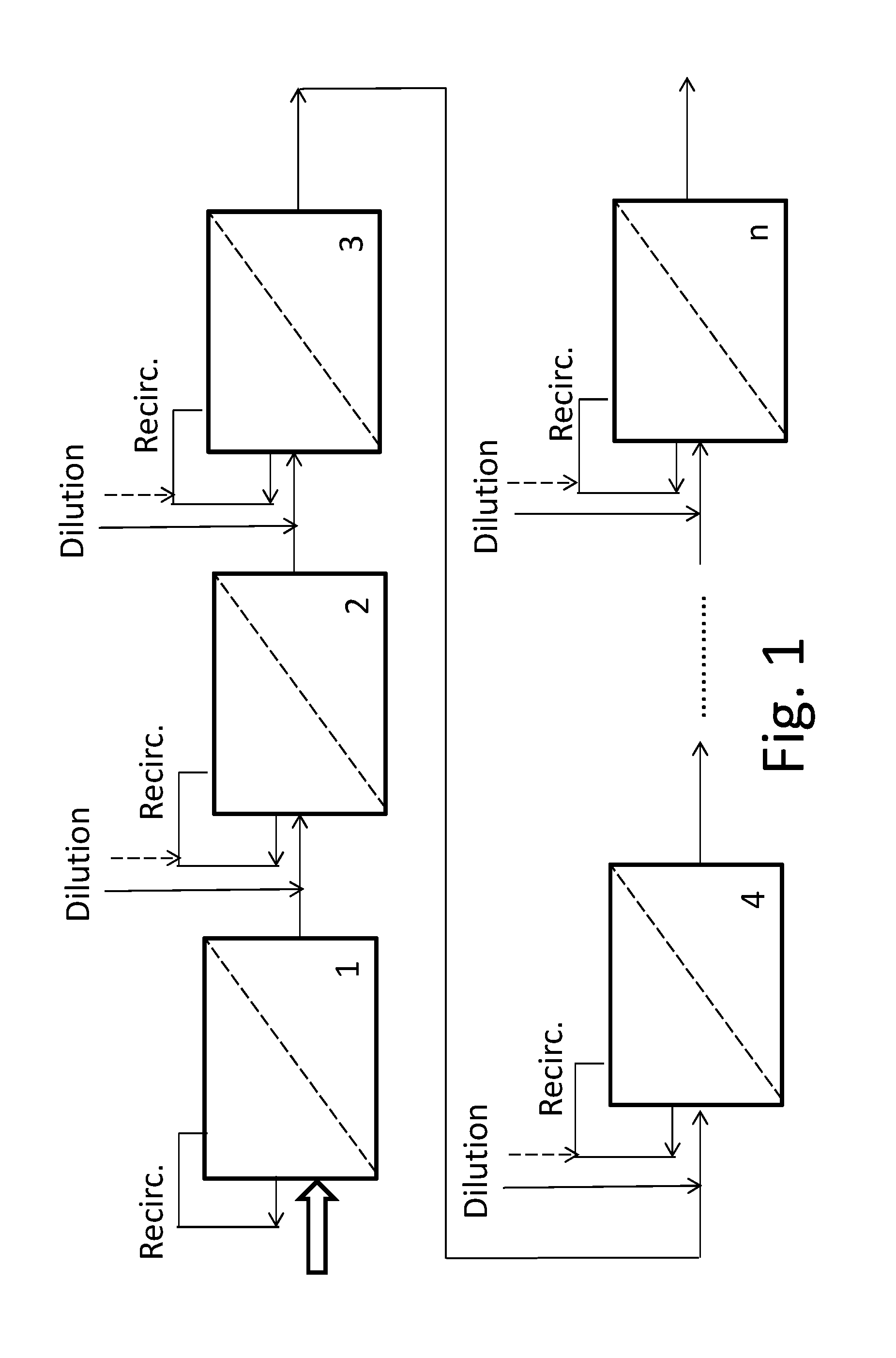Process for treating black liquor
a black liquor and processing technology, applied in the field of black liquor processing, can solve the problems of batch process and inefficiency of the process
- Summary
- Abstract
- Description
- Claims
- Application Information
AI Technical Summary
Benefits of technology
Problems solved by technology
Method used
Image
Examples
example 1
[0062]To membrane-filtrated lignin (double concentrated—prepared as above) 40 mg (1M in H2O) there was added MeOH (1 mL) and 52 mg of wet Raney nickel were added under argon atmosphere. The reaction was heated to 120° C. for 18 hours. Nickel was removed with magnet, and the reaction was neutralized with conc. HCl. The mixture was analyzed on GPC.
example 2
[0063]To membrane-filtrated lignin (double concentrated—prepared as above) 40 mg (1M in H2O) there was added 1 mL MTBE and the solution was degassed. 47 mg Pd / C (5%) was added followed by 1 drop of HCOOH. The reaction was heated to 80° C. for 1 hour and the reaction was cooled and filtered to give 10 mg of a product. The mixture was analyzed using GPC.
example 3
[0064]To membrane-filtrated lignin (double concentrated—prepared as above) (2 ml, 1M in H2O) 1,2-epoxybutane (2 ml) was added as well as 0.18 g of sodium hydroxide. The reaction was stirred and heated at 60° C. for 18 h. A sample was taken and neutralized with HCl for analyses on GPC. After allowing the reaction mixture to cool to room temperature light gas oil and 1 drop of concentrated hydrochloric acid (HCl) acid was added. After a certain time the lignin precipitates rom the aqueous phase.
PUM
| Property | Measurement | Unit |
|---|---|---|
| molecular weight | aaaaa | aaaaa |
| molecular weight | aaaaa | aaaaa |
| molecular weight fraction | aaaaa | aaaaa |
Abstract
Description
Claims
Application Information
 Login to View More
Login to View More - R&D
- Intellectual Property
- Life Sciences
- Materials
- Tech Scout
- Unparalleled Data Quality
- Higher Quality Content
- 60% Fewer Hallucinations
Browse by: Latest US Patents, China's latest patents, Technical Efficacy Thesaurus, Application Domain, Technology Topic, Popular Technical Reports.
© 2025 PatSnap. All rights reserved.Legal|Privacy policy|Modern Slavery Act Transparency Statement|Sitemap|About US| Contact US: help@patsnap.com



